5 Keys To Using Yeast with Confidence in Your Bread Machine
Sneak Peek: With these 5 keys to using yeast in your bread machine, you can make better-informed decisions about what type of yeast to use and how to handle it in bread machine recipes.
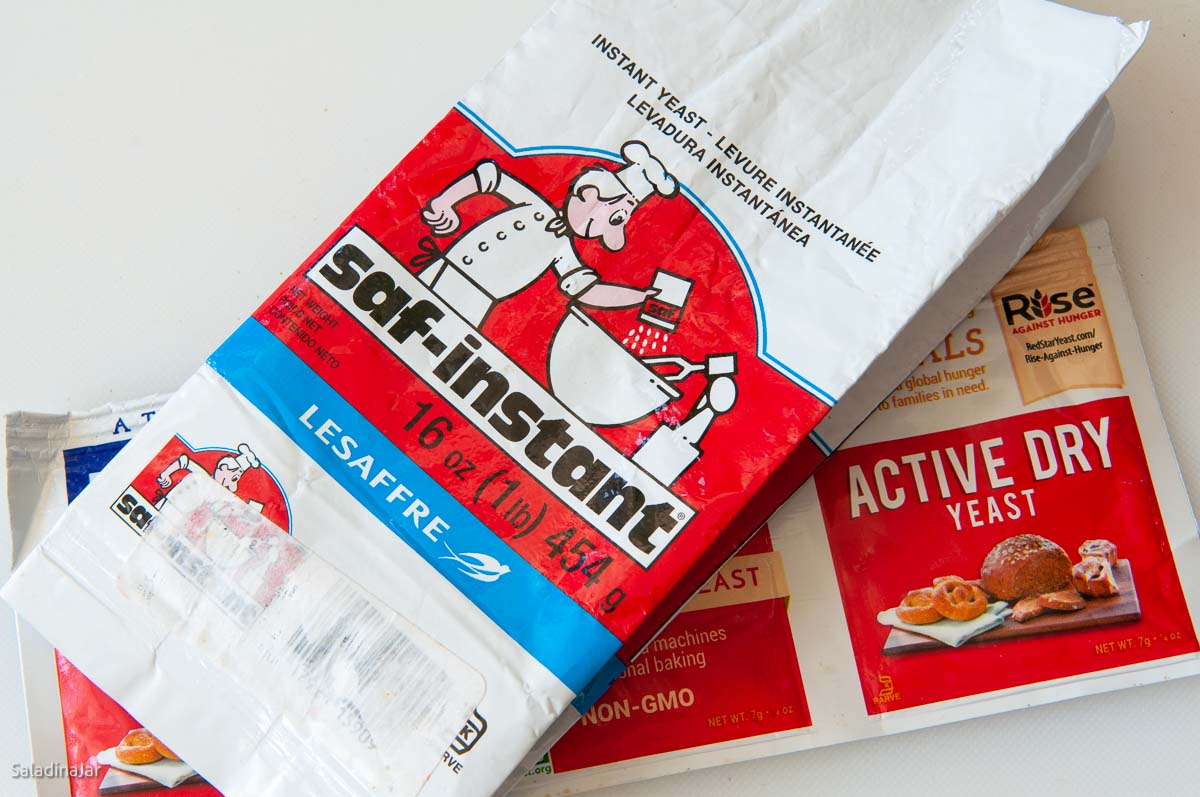
Yeast is an important and confusing topic when making homemade bread. Some information you find in books, old bread machine manuals, and even online is outdated. New and improved formulations of yeast have changed the game.
Please note: I wrote this article specifically to answer questions for my readers who make bread with a bread machine using the DOUGH cycle only. If you prefer to push one button to mix and bake your bread in a bread machine, the rules are not as flexible, and you will want to stick closer to the directions in your bread machine manual.
Happy Bakers Speak Up
“Great post. I will try the suggestion of reducing the yeast to get a better flavor in my bread. I would like a more yeasty flavor like my grandma rolls. Thanks for sharing.” –CONNIE
#1 Instant Yeast is the Superior Yeast for a Bread Machine
Instant yeast is perfect for a bread machine because it dissolves “instantly.” That means you can dump the fine, dry yeast granules and the other ingredients into the bread machine without dissolving them first.
So that you know, instant yeast has many names and varies from one brand to the next. However, they are all considered instant yeast.
- Red Star: Quick-Rise Yeast – also called fast-acting or fast-rising instant yeast.
- Saf-Instant: The red instant yeast is designed for dough recipes with minimal sugar (less than 10% of the recipe). The gold instant yeast is for sweet dough.
- Fleischman’s: Rapid-Rise Yeast, Bread Machine Yeast, Pizza Crust (also instant yeast, but formulated to use in a dough that needs no proofing).
I don’t get paid to endorse any particular brand. You can make good bread with all of these brands.
I rarely have a choice at the grocery stores where I shop as there is usually only one brand available. Shopping online offers more choices.
#2 The Rules for Instant Yeast are Looser Than Active Dry Yeast
While I don’t recommend dropping instant yeast into ice or ice-cold water, the liquid you use does not need to be warmed to dissolve instant yeast. I use room temperature or cool water in all my bread machine recipes.
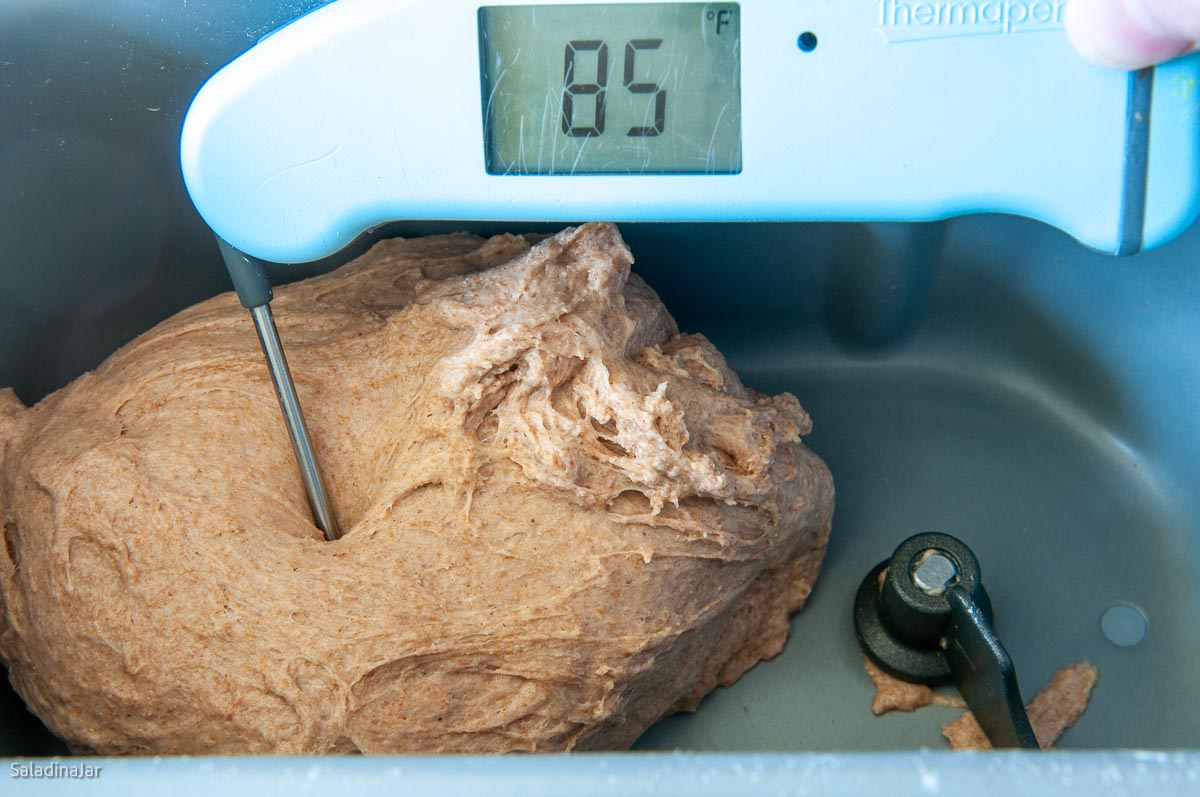
The friction the paddles produce as they knead the dough will warm everything up quickly. If you are unconvinced, stick a quick-read thermometer into your dough when the kneading phase is finished and check out the temperature.
When adding instant yeast to your bread machine pan, I always use the following order.
- Liquids or wet ingredients, including eggs, sour cream, or yogurt
- Sugar, salt, flavorings, oil or butter, dried milk
- Flour
- Instant yeast
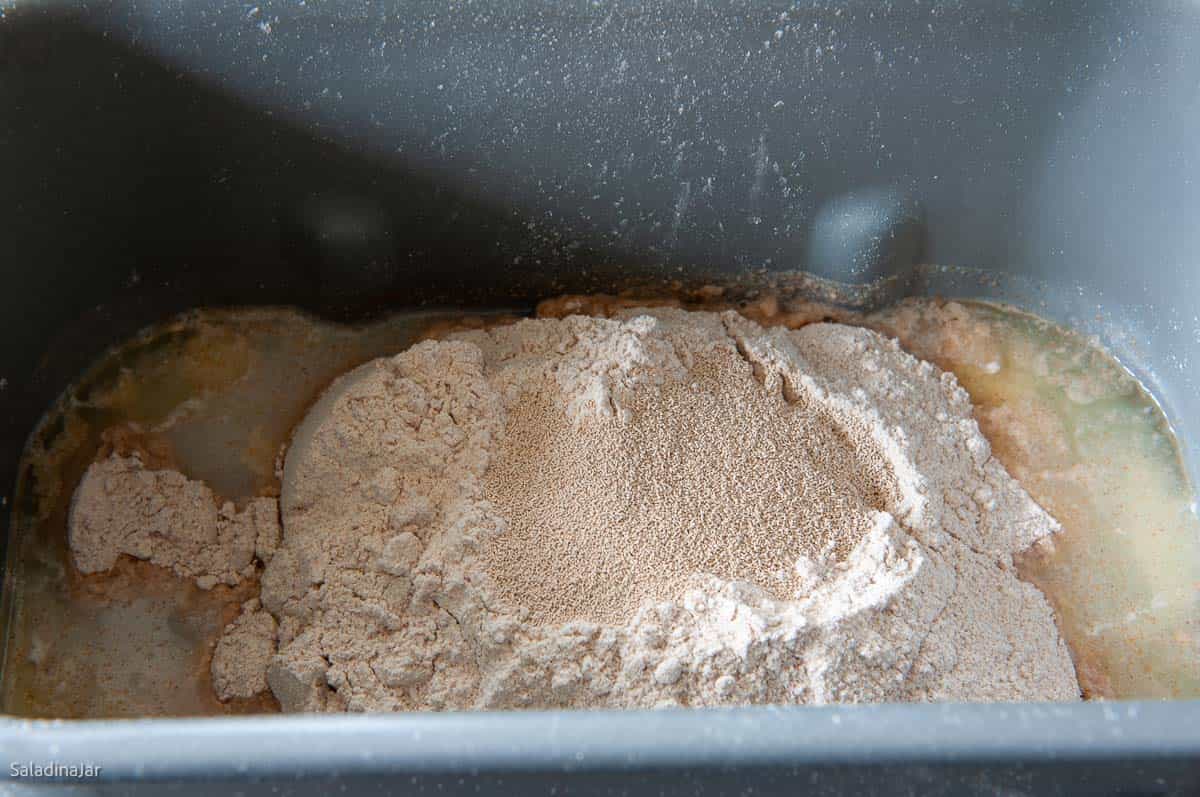
Related Post: Should Liquids Be Warm When Using a Bread Machine?
#3 The Amount of Yeast Required in a Recipe Is Negotiable
Although I recommend you follow the recipe the first time, don’t be afraid to adjust the amount of yeast you use in a familiar recipe.
Slowing down the action
Reducing the amount of yeast not only buys you time but can also result in a better-tasting loaf of bread. Remember: The longer your bread takes to rise, the more complex the flavor will be.
If you want to mix up your bread in the morning and know you will be out until later in the afternoon, drastically reduce the yeast in the recipe.
Speeding up the action
If you are making dough with a lot of sugar and fat, you may want to add a small amount of extra yeast to help it rise in a timely manner. (A large quantity of sugar and fat can cause yeast to be sluggish.) Otherwise, I don’t recommend adding extra yeast or using “quick” cycles unless you are under time pressure (which happens to all of us).
Don’t forget
Temperature and humidity also play a prominent role in how much and how fast your dough rises. Yeast is not the only player.
For example, you could refrigerate a batch of dough after it finishes the DOUGH cycle, shape it, and then refrigerate to drastically slow the rise for several hours or even overnight.
#4 Don’t Automatically Double the Amount of Yeast When Doubling a Bread Recipe
First, determine if your recipe can be doubled when using a bread machine. If the answer is yes, only add an additional 1/2 teaspoon of yeast to start with. Again, you may need to experiment.
Finally, let’s talk about using active dry yeast for those who want or need to substitute active dry yeast for instant yeast.
#5 Modern-day Formulations of Active Dry Yeast Allow it To Behave Similarly to Instant Yeast
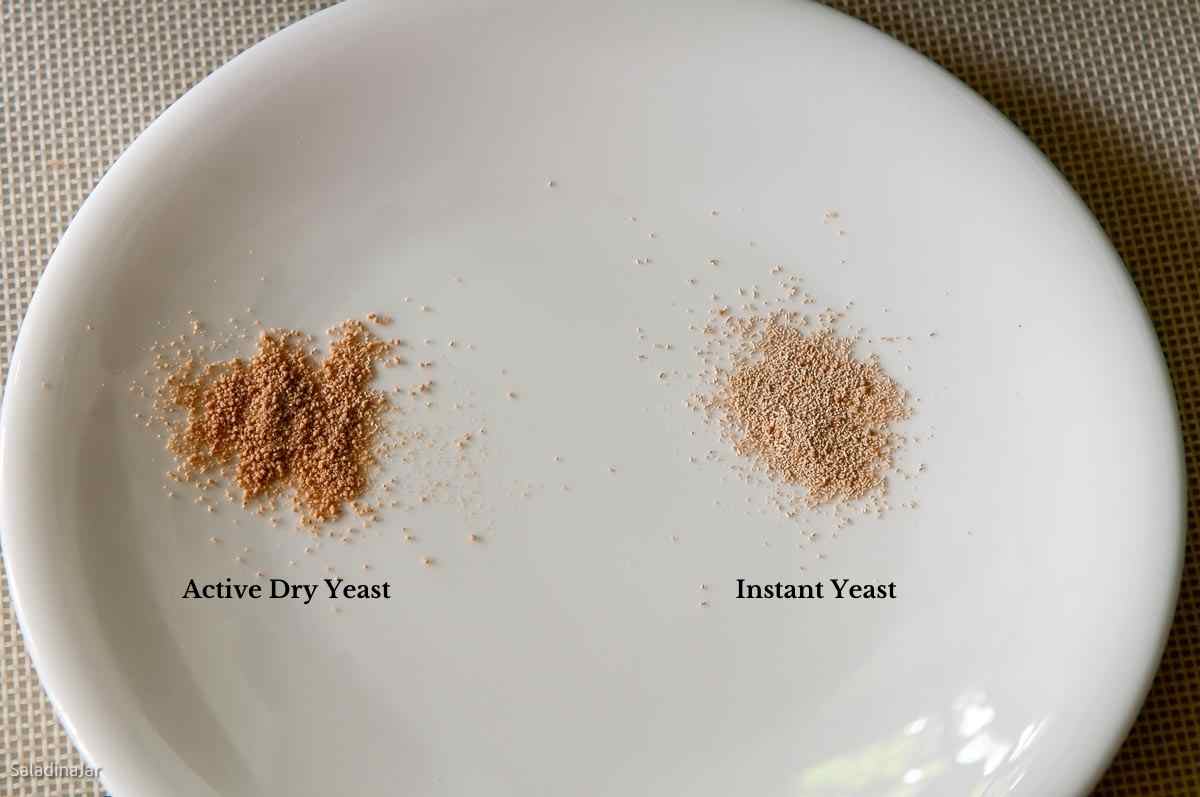
According to King Arthur Baking, you no longer have to activate or dissolve modern-day active dry yeast in warm water.
Active dry yeast: The classic ADY manufacturing process dried live yeast cells quickly, at a high temperature. The result? Only about 30% of the cells survived. Dead cells “cocooned” around the live ones, making it necessary to “proof” the yeast—dissolve it in warm water—before using.
These days, ADY is manufactured using a much gentler process, resulting in many more live cells. Thus, it’s no longer necessary to dissolve ADY in warm water before using—feel free to mix it with the dry ingredients, just as you do instant yeast.
However, there’s no harm in dissolving active dry yeast if you are unsure if it’s fresh or like doing it out of habit. Do what makes you comfortable and will produce the best bread in your kitchen.
King Arthur Baking
Out of curiosity, I tried both active dry yeast and instant yeast (same brand and the same amount) using the same recipe with identical bread makers at the exact same time (so the ambient temperature would be the same). I did not dissolve the active dry yeast, but instead, I followed the directions on the package and added it dry.
Check out the process in the pictures I’ve posted. The same experiment might turn out differently for you, so I don’t want to draw any general conclusions.
Below, you see the recipe for Sprouted Wheat Bread with Seeds made in exactly the same way except for the yeast. Each picture shows the active dry yeast version on the left and the instant yeast version on the right.
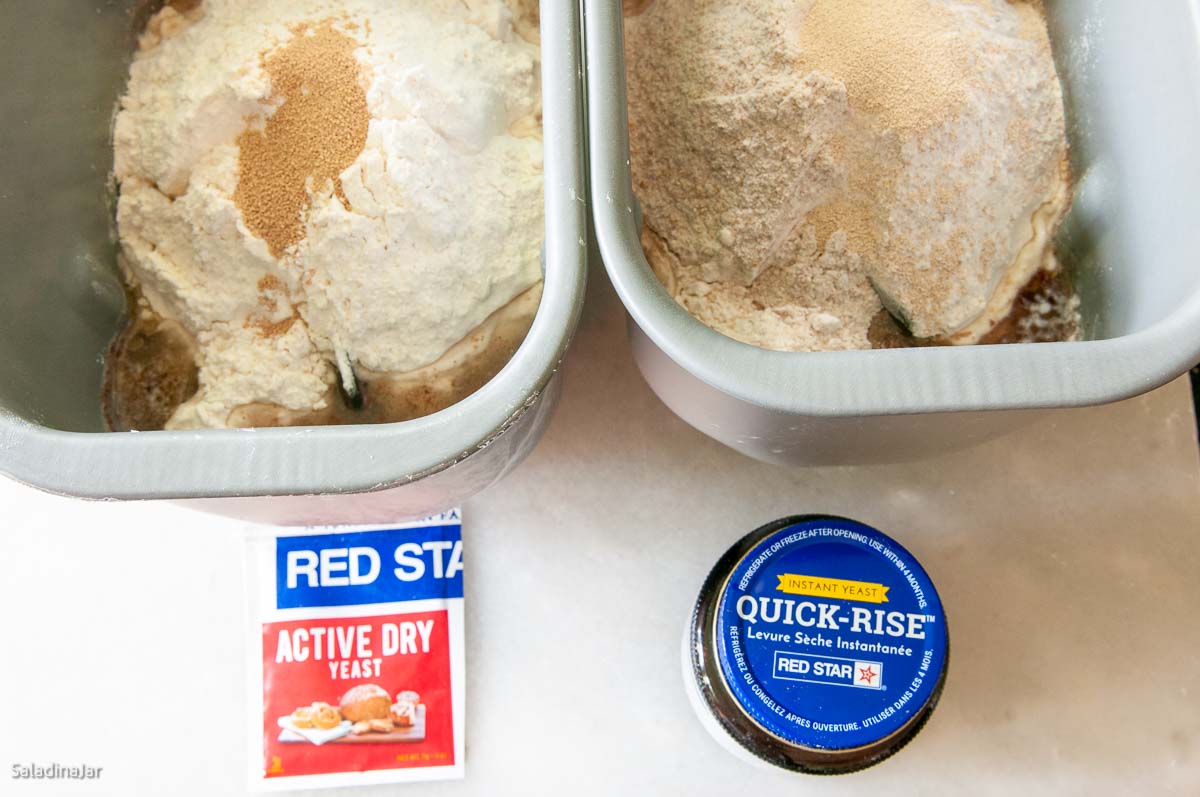
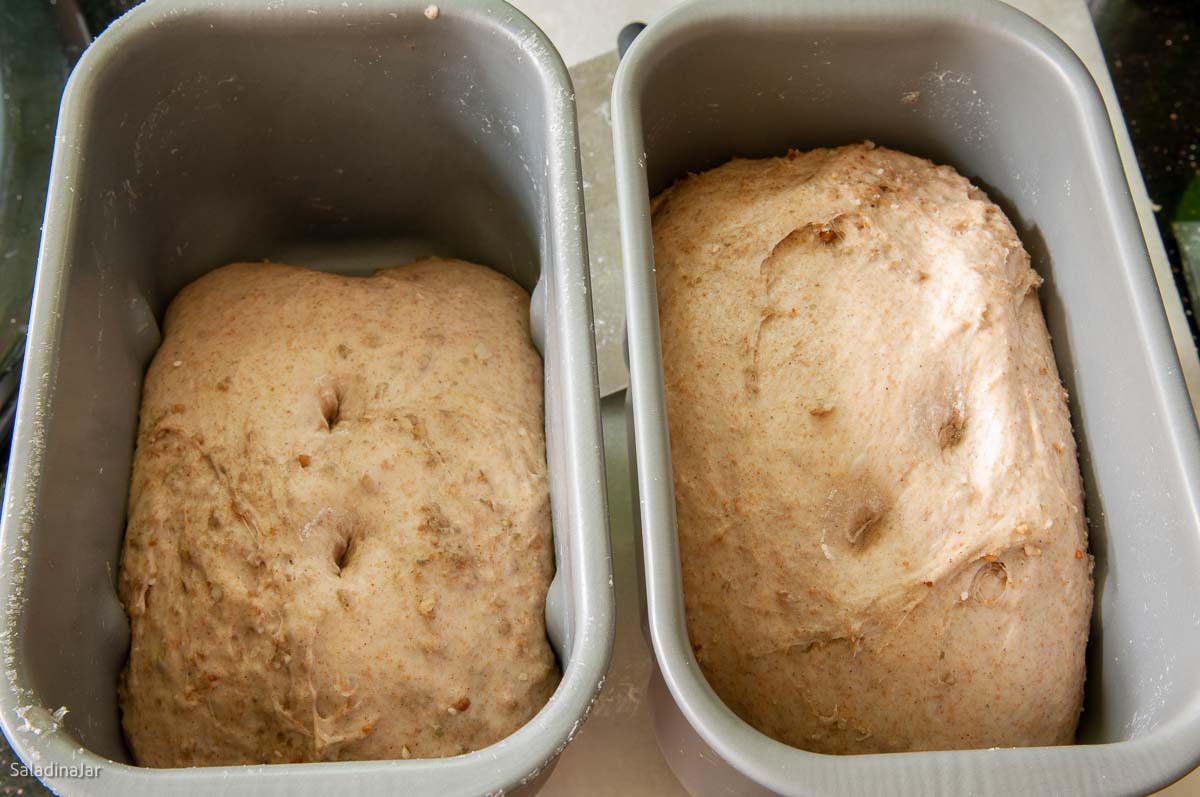
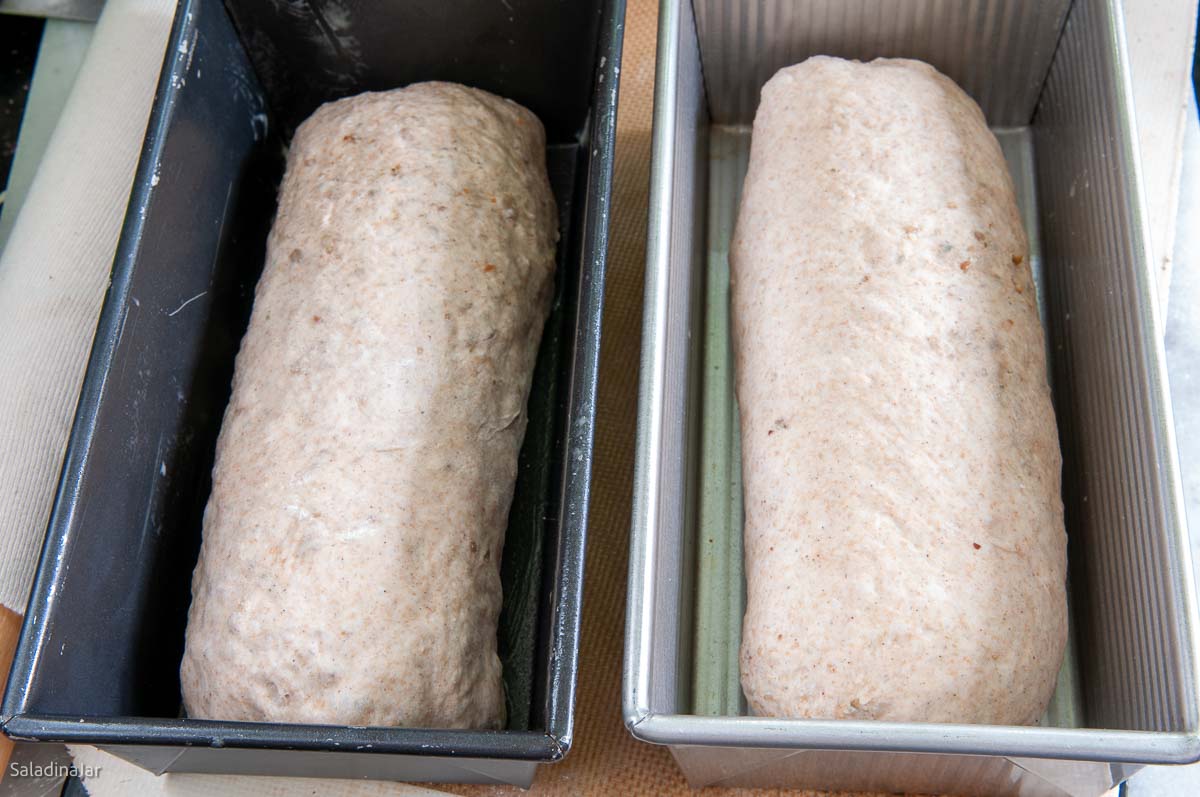
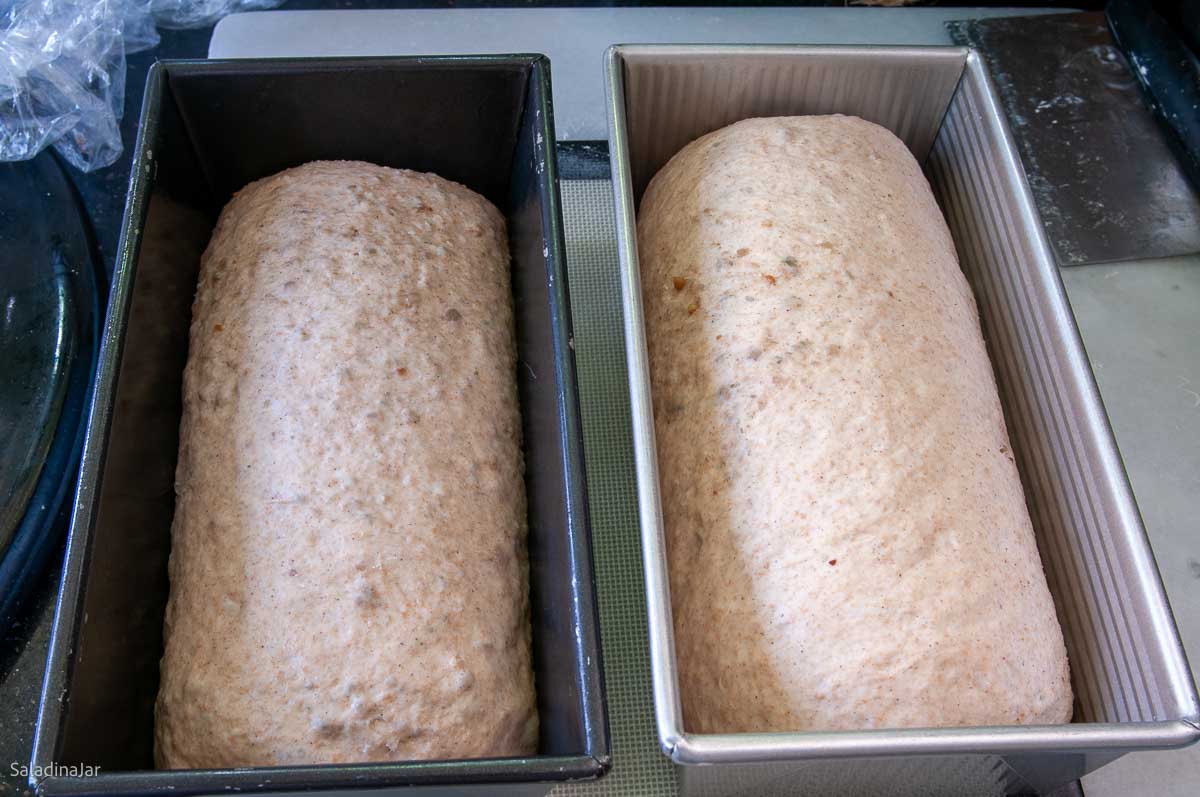
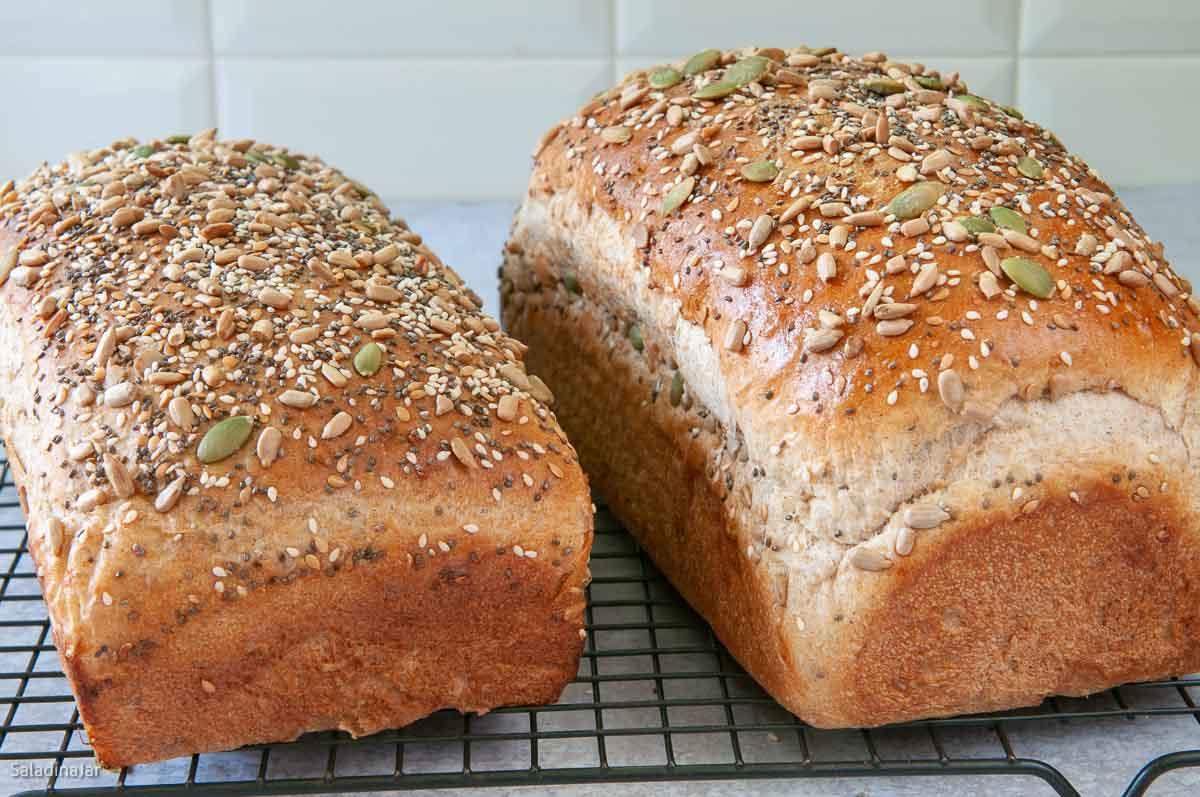
I should add that the bread on the left, made with active dry yeast, was absolutely delicious. The yeast dissolved completely as the dough mixed. However, the texture was denser than the loaf made with instant yeast. We ate the loaf on the left, and I shared the loaf on the right.
Different Brands of Active Dry Yease Give Varying Instructions
The envelope of active dry yeast in the picture on the left below indicates it’s fine to treat their yeast the same way as instant yeast and add it directly to dry ingredients. (Check the alternate directions under the “baking tips.”
The brand on the right does not recommend using their active dry yeast as a substitute for instant yeast. They instruct users to dissolve it first.
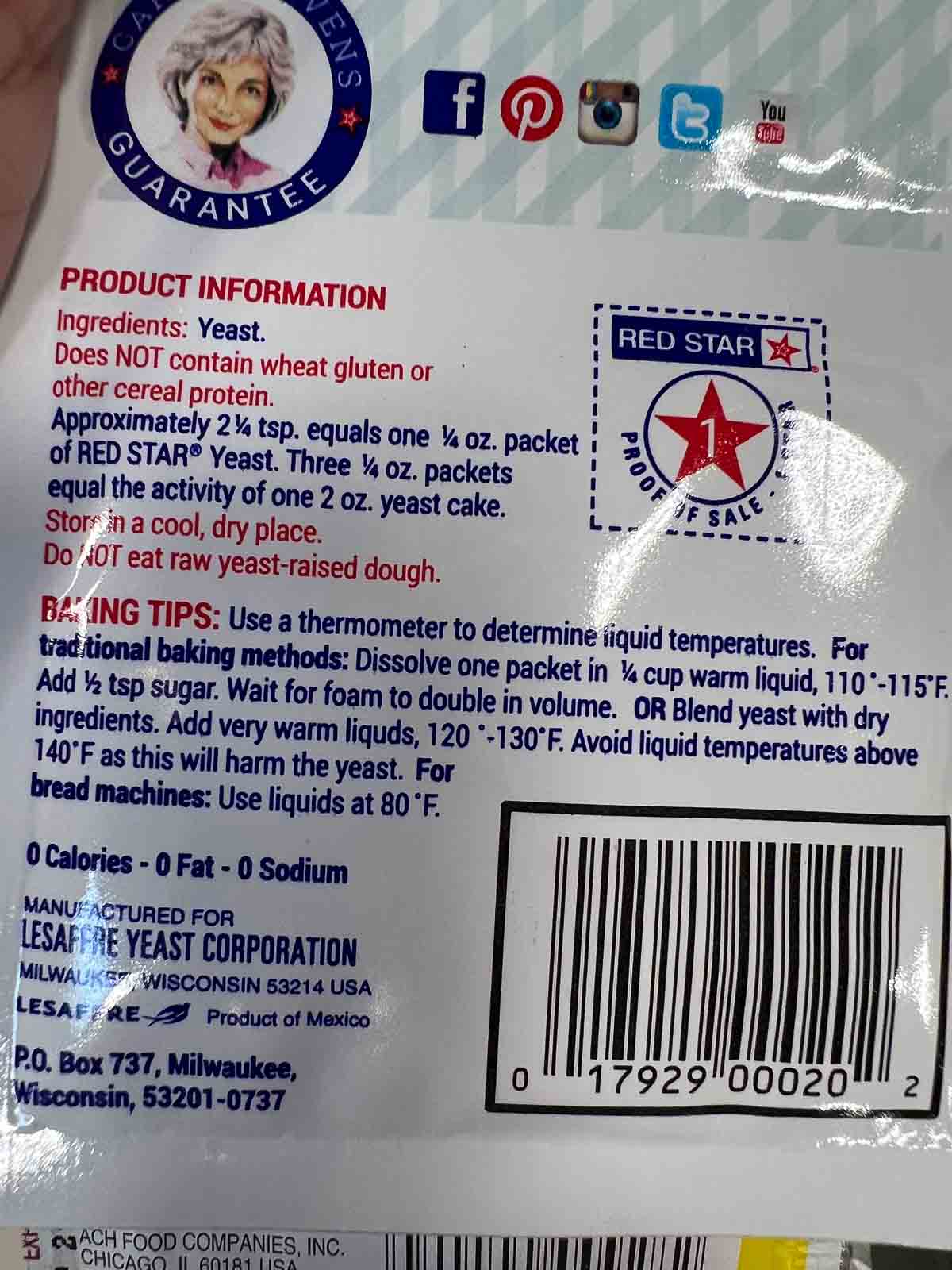
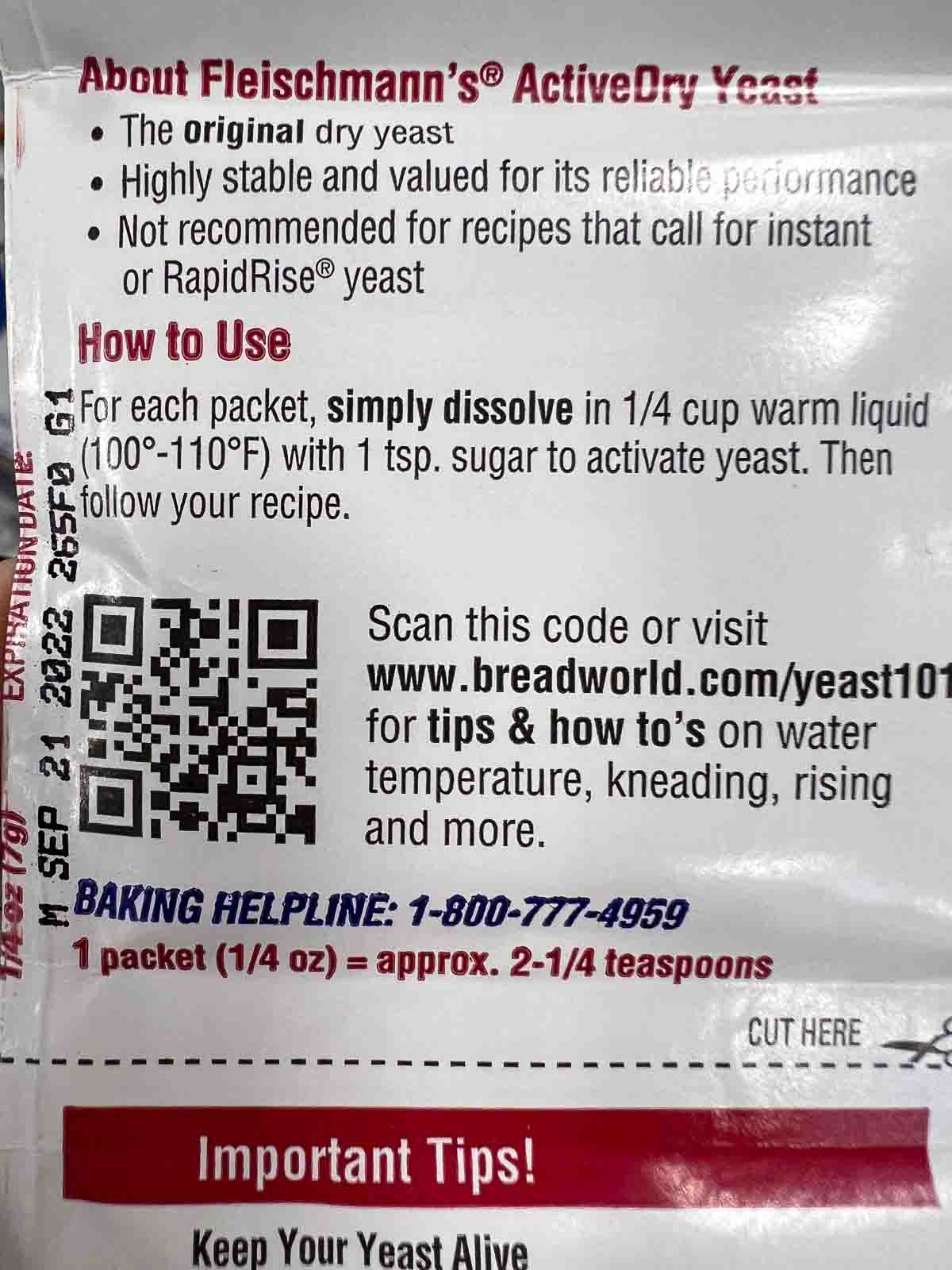
Three Reminders When Using Active Dry Yeast
- Follow the directions on the package of active dry yeast on how to add it to the other ingredients, as instructions can vary according to the brand.
- You may have to experiment with the amount of active dry yeast to see what works best in your specific recipe. Exactly how you should do that is not so clear-cut. Some say to substitute using the same amount. Others recommend using ¼ teaspoon more active dry yeast than the specified amount of instant yeast.
- Pay no attention to the clock when it comes to rising times. Judge each batch of dough by its appearance. Active dry yeast can be quite a bit slower, but not always. (Incidentally, details like this make it challenging to make AND bake bread in a bread machine. Excellent bread usually requires a human touch at some point.)
Let me emphasize that number three applies to every bread recipe you will ever make, regardless of the yeast you use.
FAQ About Yeast When Using a Bread Machine
I recommend instant yeast; however, you can make any yeast work in a bread machine, especially if you stick to the DOUGH cycle and bake your bread in a conventional oven as I specify in all my recipes. It’s the best way to make a loaf of bread you’ll be excited about sharing.
It depends on whether the recipe is sweet or savory and how fast or slow you want the dough to rise. If you are following a published recipe, follow the directions the first time, then experiment.
No. More yeast will only make the dough rise faster-not a good thing. It’s better to manage the speed of the rise by increasing or decreasing the temperature of the dough.
Don’t rush the rising period. The longer it takes your bread to rise properly, the better the flavor since it takes time to develop the complex yeasty flavors we love in artisan and homemade breads.
If active dry yeast is specified in the recipe, reduce the amount by 25% (approximately ¼-½ teaspoon if you’re not into math).
Increase the amount of yeast by 25% (approximately ¼-½ teaspoon if you’re not into math).
Natural yeast is flying around in the air at all times. When you collect wild yeast in a jar and feed it with water and flour, it’s called a sourdough starter. After several weeks, this starter will become strong enough to cause a lump of dough to rise.
Yes, you can use a sourdough starter in a bread machine. I always do it in this recipe for Classic Sourdough with No Yeast. However, it will take many hours to rise unless you add some commercial yeast to the dough. Consequently, use the DOUGH cycle to mix and knead the dough. Then, remove the dough and allow it to rise at its own pace, even if it’s all day. If you don’t have all day, make this sourdough recipe that gets an assist from instant yeast.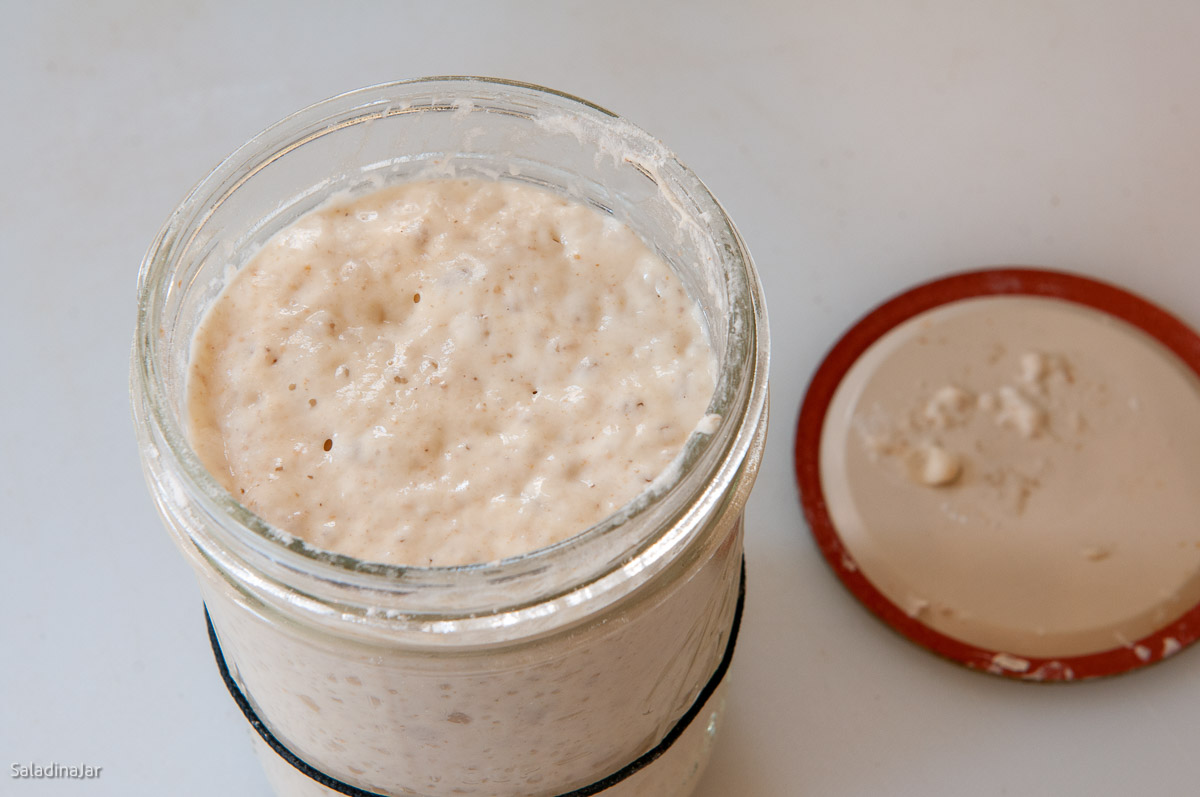
Yes. Check the dates on the package.
If you suspect your yeast might be too old, you can dissolve it in part of the liquid specified in the recipe. It is still alive if it starts to bubble up in 5-10 minutes. If nothing happens, you need new yeast.
Store instant yeast in the refrigerator or freezer in an air-tight container. It is not necessary to bring the yeast to room temperature, in my experience.
Modern-day formulations of active-dry yeast generally mean you no longer have to dissolve that yeast before adding it to your dough. However, some brands like Fleischman’s still recommend it. So, follow the directions on the package if in doubt.
By definition, instant yeast means it’s ready to use instantly, without dissolving first–a time-saver for bread machine users.
Yes. Absolutely yes. The rising process will take longer, but the flavor will improve.
You can rescue this dough. Read this post about how to recover dough when you forgot to add the yeast.
Note: Another type of yeast sold in some parts of the world but not readily available where I live is fresh yeast, aka cake or baker’s yeast. Because I don’t have access to it, I cannot address how it works in a bread machine from personal experience. For more information, check out this website.
If you have questions or suggestions, email me privately for a quick answer: Paula at saladinajar.com. Hope to see you again soon!

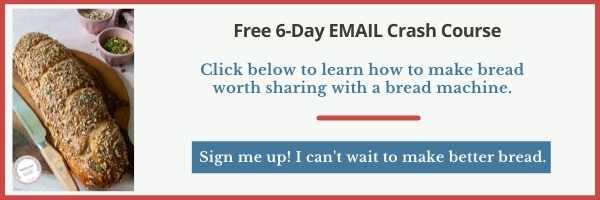

Paula Rhodes, owner
As a retired home economist, I created Saladinajar.com to share my belief that you don’t have to be a chef to find joy in creating homemade food worth sharing. Bread machines (used in an unconventional way), homemade yogurt, and quick microwave recipes are my specialty.